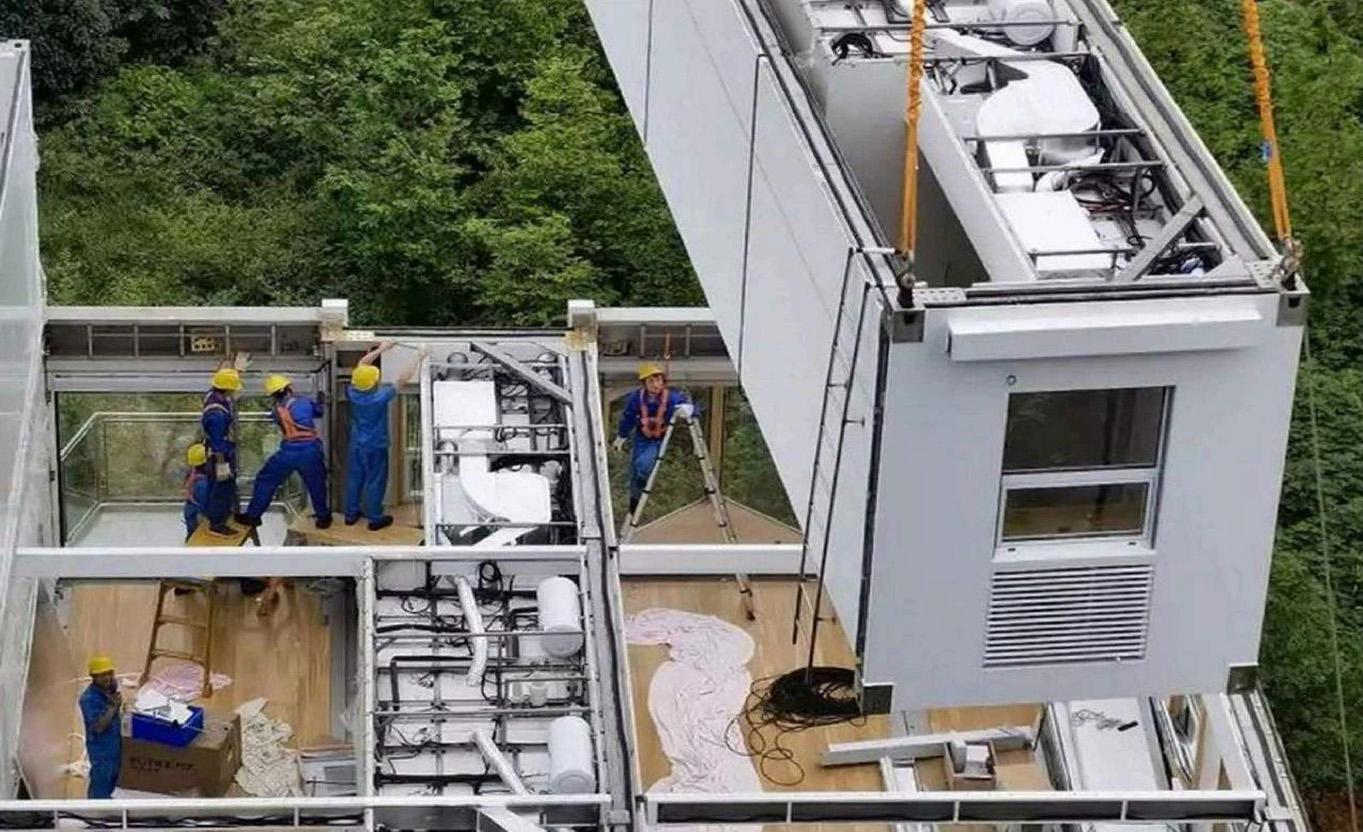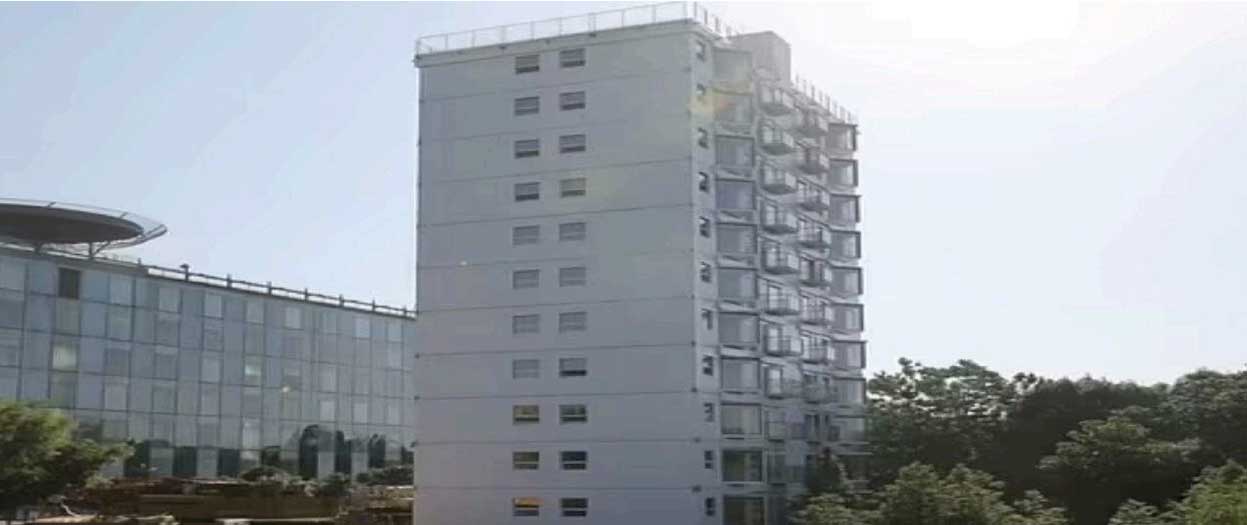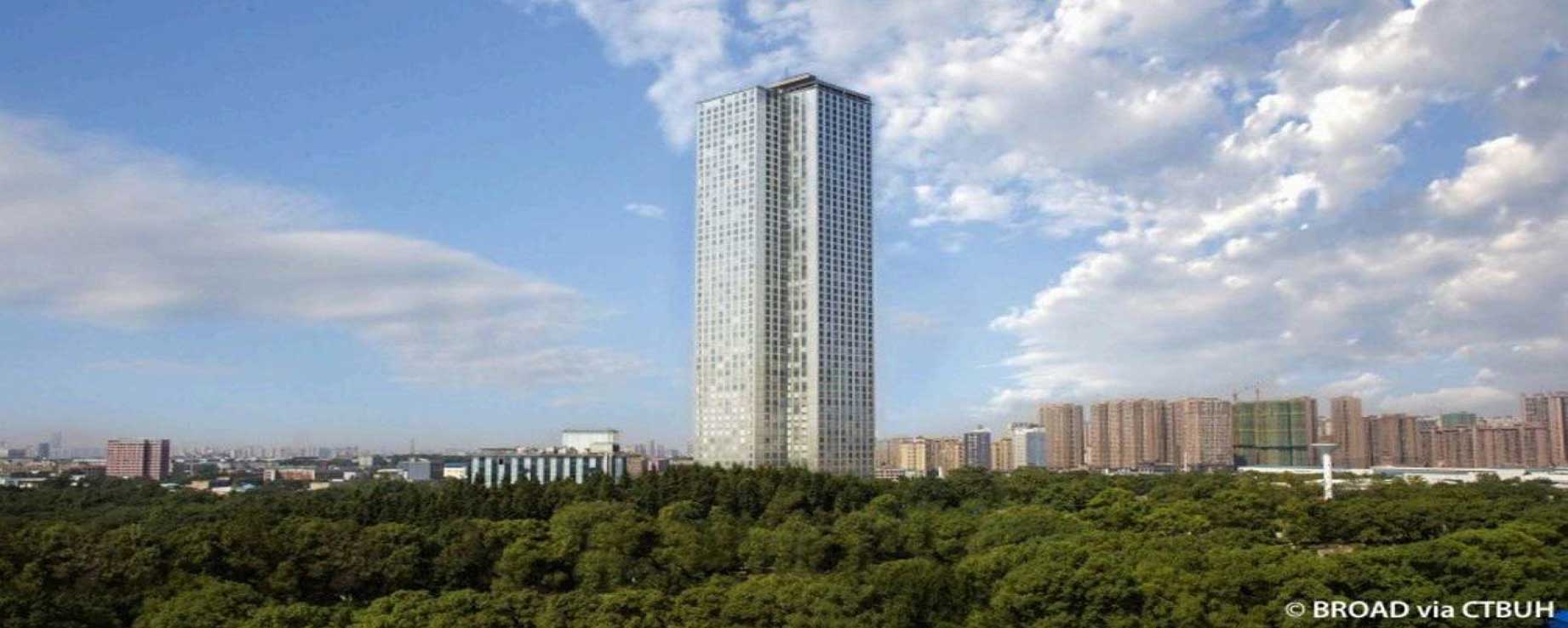
lrish Independent
Mark Keenan
Fri 23 May 2025 at 09:30
Back in the 1990s, Ireland was in awe of the 'factory kit' home builders from Germany.
Conga lines of outsized articulated lorries chaperoned by minibuses would occasionally roll off the ferry and snake off to their Irish destination - usually some field in a wealthier part of rural Ireland.
The Germans disembarked with characteristic efficiency and precision and all got to work at once with purpose, rapidly assembling their outsized, factory-manufactured home Lego kit components, which had been packed with perfection into container boxes back in Germany.
Within a week, a usually substantial shiny and stylish contemporary home would be standing on site, ready to wlk into. And they were gone.
To those watching it happen in a country where home building has always taken forever, the appearance of these kit homes in the landscape like magic from firms with Grimm-sounding names like Huf and Hanse, was pure live alchemy. And occasionally, a source of mirth when the super big artics from the land of autobahn got stuck down a remote grassy boreen.
Accustomed to Irish builders in holey jeans held together with patches of hard cement, we were dazzled by shiny Teutons in spotless work suits and yellow hats.
They worked like a blizzard. Panel screwed to panel and beam to beam. Everything slotted together seamlessly. Were those German kit homes somewhat more affordable, they'd be everywhere In Ireland today.
So, just for a second imagine that they could do the exact same, but with an entire apartment block. What if they could build 20 apartments in a day?
Not the Germans this time, but the Chinese.
In 2021 the Chinese built an 11-storey apartment block in the city of Changsha in Hunan Province in 28 hours and 45 minutes
Because they can. And they have been doing it for a long time. So much so that their biggest problem right now is they actually can't stop doing it.
But just for fun, and to show off what their construction industry is capable of, in 2021 the Chinese built an 11-storey apartment block in the city of Changsha in Hunan Province in 28 hours and 45 minutes.
You can see it all happen on YouTube, where a clip has been posted for posterity.

The apartment block built in one day
While you're on there you could also look at a clip posted by The Gurdian 10 years ago, which shows a 57-storey skyscraper going up in 19 days. That's almost three floors a day. 10 years ago.
But the thing about the West is this: it likes to sneer at Chinese technologies on all fronts. And true enough, high-profile disasters usually precede their better efforts. But eventually, they get it right.
So also in Changsha in 2022, an apartment block collapsed due to unregulated construction and killed 54 people. However, this was an older building on top of which new floors had been constructed without adequate support. There have been many flawed building controversies before the state cracked down.
Take car manufacturing. A few years ago, the West was chortling at the clunky and gauche designs of the electric vehicles with nasty cheap finishes coming out of China. Today, Tesla is fast sinking and the Chinese are leaders in the field.
Take defence. A few years ago, the West was sneering about the Chinese efforts at stealth fighters and missile technology. There had been more than a few misfires, and there has been a huge anti-corruption crackdown within their missile programme following some embarrassing no-fires.
When it comes to one-off houses, the Chinese have been 3D printing them for years
But just recently, the jokes turned into panic in Western defence industries when the India-Pakistan border conflict appeared to demonstrate some Indian French-made Rafale jets taken down by Chinese fighter and missile technology deployed by the Pakistani side.
So what about home building?
When it comes to one-off houses, the Chinese have been 3D printing them for years. When it comes to apartments, they have been lashing up so many blocks over the past decade that there's now 60 million empty homes over there (some estimates say it's north of 90-million).
With their property market sinking fast, the Chinese have'ghost cities', and the globe's biggest construction sector will certainly have less and less to do.
This is a misfire on a huge scale, which today threatens to bring down their entire economy as their property market starts to crash, despite big cash injections and huge supports from government.
China's economic miracle took place at a ferocious speed. The economic powerhouse that is Shenzhen is currently estimated to have a population of 20 million, bigger than London. Forty years ago, it was less than a million.
Shenzhen was designated to be China's first Special Economic Zone back in 1980 after a Chinese delegation visited the Shannon Free Zone under instruction from Deng Xiaoping, and took that inspiration back to China.
Current premier Xi Jinping visited Shannon in 2012 to acknowledge Shannon's role in kickstarting China's economic miracle.

Xi Jinping visited Shannon in 2012
That breakneck pace of growth has been seen all over China until recent years, with a vast population shift from the country to the city in search of manufacturing jobs.
This population had to be housed and fast. With no big history of building high, the Chinese started from scratch and from where they were strong - in manufacturing. In many ways, their high-rise construction techniques are pioneering.
The tower blocks which go up in a day are manufactured in factories in uniform shipping-container-sized pods. These arrive on site on the back of trucks and are hoisted by crane to the next required spot on the emerging building. Here, they are bolted into place and like a Swiss army knife, panels swing out holding already installed doors, balconies, showers and so on. Everything snaps into place.
On site, all they have to do is screw on the bolts. And up they go.
So while it takes a day to get a 20-unit apartment block up in China, here in Ireland it can take five to 10 years thanks to planning and infrastructural issues. But when we do get on site, you're unlikely to see a block emerge complete in less than a year, and often it can take two.
Ireland's construction sector has adapted somewhat, albeit very slowly, to factory and prefab home technology. But much of what we do is still mired in the past It took a decade before timber frame building was accepted and perfected, and we still use cement block build in houses.
Many counties in need of housing are not seeing those new homes emerge
Aside from serious planning and infrastructural issues, the cost of the actual construction process in Ireland is now massive.
Many counties in need of housing are not seeing those new homes emerge because, despite significant inflation of late, the prices of second-hand homes are still cheaper than the sale price necessary to recoup the cost of new homes and make a profit into the bargain.
Meanwhile in China, there will be lots of builders looking around for work and plenty of apartment block'manufacturers' looking to shift product.
Having postponed an inevitable property crash for more than a decade through state supports, the Chinese are now looking at the biggest property crash in global history. One developer after another has gone bankrupt in the last four years.
Tens of millions of apartments remain unfinished in a country where the population is not growing. Manufacturers of kit will be threatened with closure unless they open new markets abroad.
So surely common sense tells us to take the product and expertise from the place where it is most abundant and affordable (China) and bring it to the place (Ireland) where it is most desperately required.
There is evidence that some Eastern European countries with closer links to China have already been availing of that technology and expertise in their construction sectors.
There are big obstacles, certainly.
But the fact that Chinese electric cars are now on sale and popular in Ireland and much of the EU - and that Chinese weapons technology is now proving popular in foreign countries - indicates that where there's a will, there's a way. And Chinese manufacturing is the fastest adapting.

This 57-storey building was built in 19 days in central China
The cost of the 20-apartment Changsha block that went up in a day works out at under €2.6m, which comes in at €130,000 an apartment, when Dublin City Council has been telling us that an "affordable" homegrown equivlent costs over €400,000.
Likely the cost will be higher when Irish labour and additional steeper costs are added to the equation (although Chinese teams could come with the kit). But even if that brings the cost up to €200,000, that's a big win.
Tallying Irish and European building standards and regulations with Chinese manufacturing and construction techniques will be a biggie. But again, the Chinese have managed to satisfy those with their electric cars. Why not with home building?
Ireland is 10 years into a housing crisis and according to the latest data, we're going backward
The sheer speed of construction is an obvious bonus in a country which needs tens of thousands of new homes in a hurry.
Back in 1980, China was a country that struggled to kickstart its economy. So Deng Xiaoping sent a delegation to Ireland to get that inspiration from the world's first free-trade zone in Shannon.

Chinese delegates including Jiang Zemin (front row, third from right), who served as president in the country from 1993 - 2003, pictured on his visit to Shannon in 1980. Photo: Courtesy of Shannon Group Pic
Today, Ireland is 10 years into a housing crisis and according to the latest data, we're going backwards, not forwards on new home construction numbers.
In 2025, it's high time for Micheal Martin to channel his inner Deng Xiaoping, and get a serious Irish construction and Department of Housing delegation out to China, eyes and ears open and notebooks in hand.
Because when it comes to being serious about solving our housing crisis, outside of our own craggy Island, the Chinese are the best bunch of lads we could talk to right now.
Original link >